Ju Wenjun (32) claimed her fourth Women’s World Champion title after clinching a crucial victory in the decisive, final, 12th game of the match against challenger Lei Tingjie
With this victory, Ju has now equalled the record set by her compatriot Hou Yifan, both having won the world crown four times. Apart from defending the title, Ju also won €300,000 in prize money, while €200,000 went to the runner-up Lei Tingjie.
Arkady Dvorkovich, the President of the International Chess Federation (FIDE) congratulated Ju on her victory: “To win a world crown is an amazing success, but to do it for a fourth consecutive time as Ju Wenjun did is something else. Congratulations to Ju for her victory but also to Lei for putting up a great fight. The chess world has another fantastic memorable event, and it was great to be a witness to it”.
“This spectacular and tense match showed the best of women’s chess. The games played by the two Chinese players, the atmosphere and the excellent organisation of our Chinese hosts will be remembered”, Dvorkovich added.
How the final game unfolded:
This was the first time Ju Wenjun reached a final of a world championship match with a tied score – 5.5:5.5. In all three previous matches, she was either leading or trailing.
Despite holding the world champion to a tie after 11 games, springing several surprises during the match and showing excellent opening preparation and tactical skills, the 26-year-old challenger Lei Tingjie cracked under pressure in the final round.
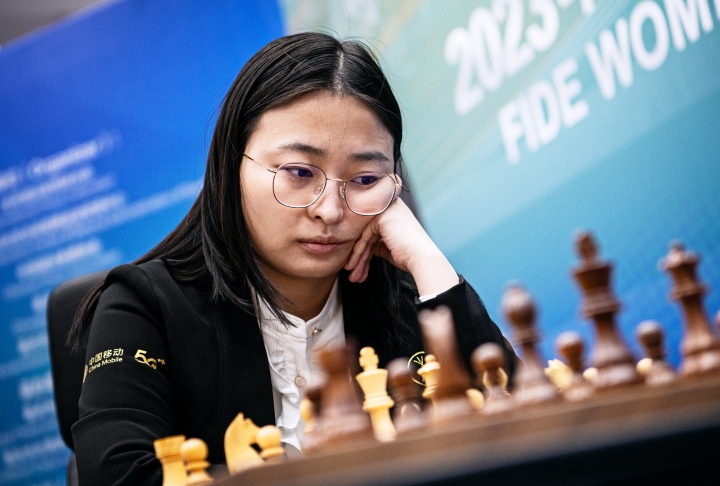
Playing as White in what turned out to be the final game in the match, the defending World Champion Ju Wenjun punished her opponent’s errors in the middlegame to emerge significantly better. In the Queen’s Gambit Reversed Lei Tingjie opted for a lesser known line. Despite the position demanding Black plays more aggressively, Lei chose a more cautious approach. In an even position in the middlegame, Lei made a critical error after which White had a strong advantage.
Luckily for Lei, the defending champion did not punish her but, instead, returned a mistake, by going for an exchange of material where White had a bishop and a knight for a pawn and a rook. Now Black was more comfortable. However, Lei’s luck ran out on move 22 when she made a positional blunder which gave the decisive advantage to White. This time, Ju executed a series of precise moves to secure victory.
Following the exchange of queens, the two were in an endgame where Black had very weak pawns in the centre and no real counterplay. By move 29 she was in dire straits.
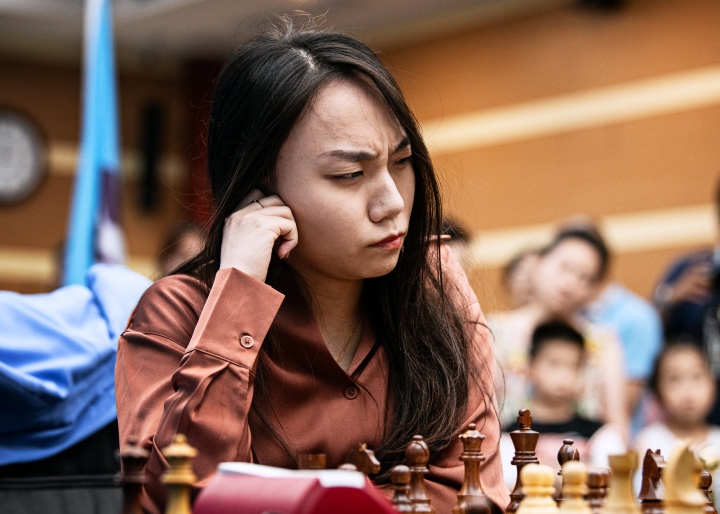
As the world champion laid back in her seat, the challenger sank into deep thought, head in hand, realising this is the end. Following the famous chess quote that no one ever won a game by resigning, Lei fought on, hoping for a chance to make a comeback. Finally, on move 62, she had to resign.
In all three games in this match that resulted in a victory, it was the player leading the white pieces who scored.
Although she took the lead in the match in game five, Lei suffered a defeat in game eight after which her confidence somewhat cracked. In the final encounter of the match, she just fell apart in the middlegame. Despite this defeat, Lei Tingjie made history as one of the strongest challengers for the title of World Champion and is likely to make a comeback and fight for the crown again.
Here follows a closer look at game 12 of the match:
The first move in today’s game was made by Wang Yongquan, Deputy Director of the Standing Committee of Changshou District People’s Congress and Yang Shengyu, the President of Chongqing Chess Association.

This game was the final chance for either side to make a push for the crown in the classical part of the match. The defending world champion Ju Wenjun was leading white pieces in her attempt to win the crown for the fourth time. As noted by Chinese Grandmaster Xu Yi, Ju Wenjun has never reached the final game of a world championship match with an even score! In the previous three matches, she was either leading or chasing the score by the final game.
After 1.d4 d5 2.Nf3 Nf6 3.e3 Lei went for 3…c5 entering the Queen’s Gambit Reversed.
With 4.dxc5 Ju took the most straightforward approach. An alternative was to play 4.c4 and offer an option to transition into different theoretical lines. The opponents quickly made a series of well-known moves.
4…e6 5.b4 a5 6.c3 axb4 7.cxb4 b6 8.Bb5+ Bd7 9.Bxd7 Nbxd7 10.a4 bxc5 11.b5
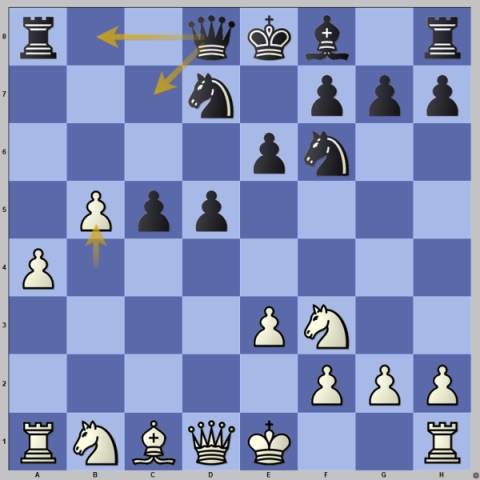
The position is roughly even. White has two passers on the a-and-b-files but slightly lags in development. Black is to develop the bishop and castle and is going to play in the centre and try holding White’s queenside advance. White will put her bishop on b2, on a powerful diagonal, aiming at the black king’s fortress.
Wesley So has played this position three times with Black. He lost to Alireza Firouzja in 2020 but then won against Le Quang Lien and Bluebaum the following year.
An interesting move for Black to consider here was 11… g5 to go for an extremely sharp game.
11…Qc7 A better place for the queen is on b8, as with being on c7, Black can lose a tempo if White manages to make a b6 push.
12.Bb2 Bd6 13.0-0
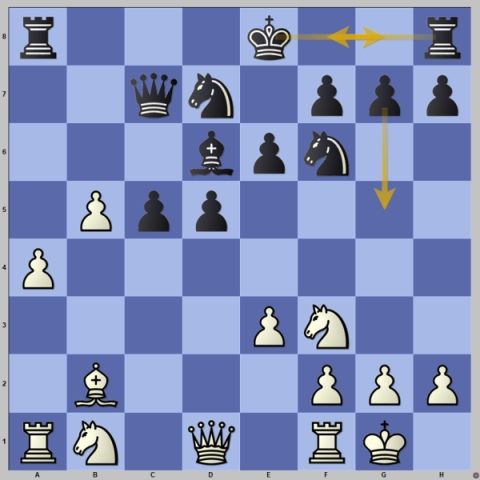
Black still had the opportunity to proceed here with the aggressive move 13…g5. In fact, 13… g5 was played in all the three previous games that reached that position – but they all ended in a draw.
It seems that the position was inviting Black to play more aggressively or risk entering a slightly inferior game. Was this Ju Wenjun’s intention all along, assuming that Lei would not dare to play the gutsy moves like this one?
13…0-0 Lei played this move after 18 minutes of thinking.
14.Nbd2 Rfc8 14…e5 was considered a better move here for Black, increasing the pressure on the centre to push d4 at some point.
Ju took her time here. The best option, according to the engines, was 15.Qb1, reinforcing the b5-pawn. Ju played 15.Qc2 instead.
Again chess engines insist on 15…e5 with the idea of 16.e4 c4, with a lot of complications.
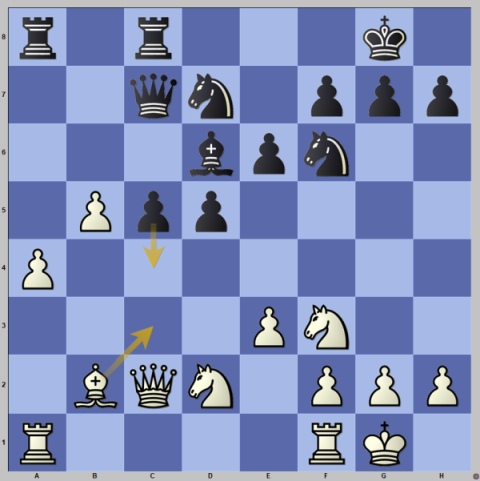
But Lei played 15…c4?! to which White immediately responded with 16.Bc3. Now it’s much harder for Black to hold white pawns on the queenside. White plans to get her f1-rook to b1 and f3-knight to e5 and support the pawn advance.
16…Nc5 17.a5 And the pawns were off 17…Nb3
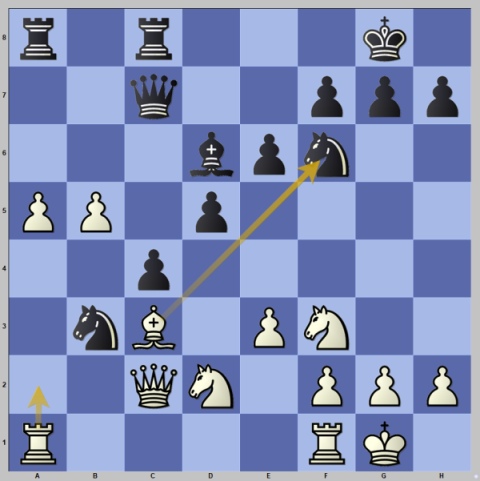
“Black is in trouble”, said Grandmaster Alik Gershon about the position. Indeed, the computer gave the commanding lead to White at this point.
The optimal move for Whiteh here was 18.Ra2, after which Black would struggle to keep up.
Instead, after thinking for 15 minutes, Ju played 18.Bxf6? A huge blunder, immediately handing over the advantage to Black.
18…Nxa1! 19.Bxa1 Qxa5 Black got a rook and one of White’s passers for a knight and a bishop. This is the first game in the match where a material imbalance was on the board.
“Instead of White having a commanding advantage, it’s anybody’s game again”, noted Grandmaster Alik Gershon.
It was an important respite for Lei, who was now lagging on the clock.
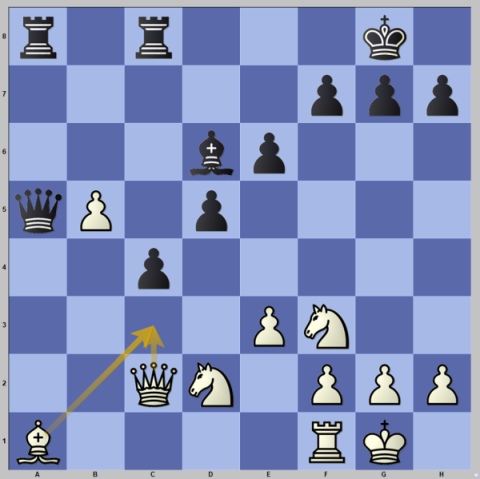
20.Qc3 Ju spent nearly 20 minutes calculating the consequences of the queens being exchanged. Usually, in this type of position, the side with two minor pieces wants to keep the queens on the board. The World Champion decided otherwise. The computer considers 20.Bc3 to be a slightly better alternative here.
After 20…Qxc3 21.Bxc3 Rbd8 22.Nd4, the fight around the b5-pawn had begun.
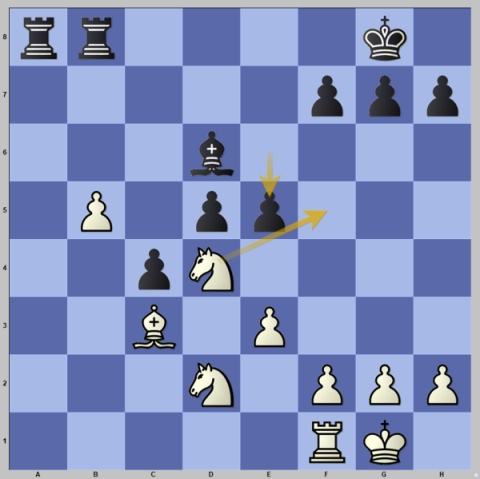
22…e5? A serious positional and tactical mistake by Lei. Black weakened her pawn chain and the e5-pawn. 22…Ra3 or 22…Bc5, pressuring White, offered much better perspectives for the challenger.
23.Nf5 Now Black is again in trouble as the e5 pawn falls. Still, White will need to find many precise moves to get the advantage, noted Grandmaster Alik Gershon.
24.Bxe5 Rxb5 25.g4 Making a “luft” for the king but it was an inaccuracy by Ju. 25.Bd4 or 25.Bc3 seemed more natural.
After 25…g6 26.Nd4, the opponents reached the last critical position in the game.
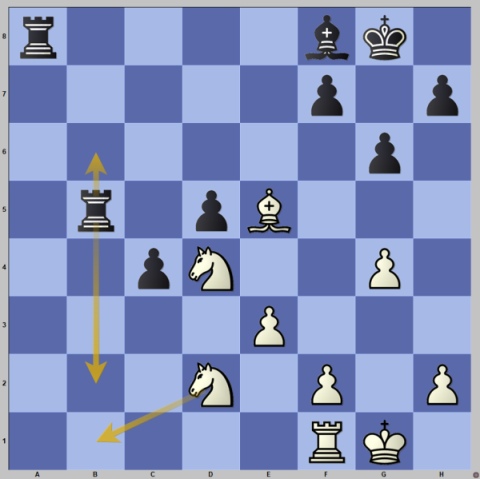
26…Rb2? After this move, Black has no way out. Lei could have put much more stubborn resistance with 26…Rb6, recommended by chess engines.
27.Nb1! White now has a huge advantage as she achieves an ideal setup for her knights. “As a human, it’s difficult to consider Nb1 as an obvious move”, noted Grandmaster Xu Yi. Impressive technique by Ju.
The exchange of a pair of rooks with 27…Ra1 does not change much, as after 28.Nc3 Rxf1 29.Kxf1 White is in total control.
27…Bg7 Lei opted to trade the bishops, but White emerged even stronger.
28.Bxg7 Kxg7 29.Nc3 White was now winning. “You know this is lost”, said Grandmaster Gershon, lamenting Lei’s position.
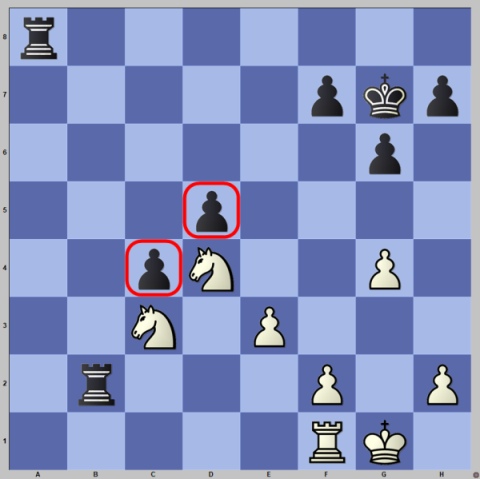
In subsequent play, White gradually got to the opponent’s weak pawns while Black had no counterplay. Soon Ju got the d-passer and started advancing it, supported by all of the white pieces. Lei resisted to the very end but eventually had to accept the inevitable.
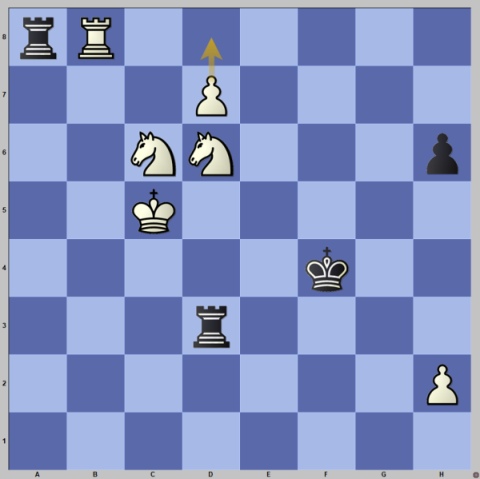
Since Black can’t prevent the promotion of the d7-pawn, Lei capitulated.
Ju Wenjun after defending the title: I’m excited and relieved
In the first interview after winning the crown for the fourth time, Ju Wenjun was surprisingly calm.
“I am excited but also relieved that it is finally finished. This is very emotional for me”, she said although not showing much emotion.

“Now my happiness is on 9/10”, she added with a smile.
When asked to compare this victory to the previous ones, Ju said: “Each time is very special for me. It’s really good and both players played well this time, so it’s even more special”.
“I was more lucky”, she concluded.
Lei Tingjie showed more emotions and was smiling during the press conference, despite a heavy loss.
“The match finally finished. No more pressure. There are so many things to look forward to doing. For me, this is kind of a relief and I look forward to relaxing”, Lei said.
“I will be focused on the future and will try my best to play good chess. I was very happy to play against Ju in this match and I learnt a lot”.
“I will be back”, Lei said.

Text: Milan Dinic
Photos: Stev Bonhage
Official website: womenworldchampionship.fide.com/
About the Match
The match takes place in two Chinese cities, where each of the contestants comes from. The first half of the match will be in Shanghai, while the second half takes place in Chongqing.
The match consists of 12 games of classical chess. The payers will have 90 minutes for the first 40 moves, followed by 30 more minutes for the rest of the game, plus a 30-second increment per move starting on move one.
Players cannot offer a draw before they reach the 41st move.
In case of a tie, there will be the following tiebreaks:
Four games with a 25+10 time control.
Two games with a 5+3 time control.
Two more games with a 5+3 time control.
One game with a 3+2 time control, until a winner is determined.
The prize fund is €500,000, with €300,000 going to the winner and the remaining €200,000 to the runner-up.
If the outcome of the match is decided upon tiebreaks, the winner will take €275,000, while the runner-up will receive €225,000.








